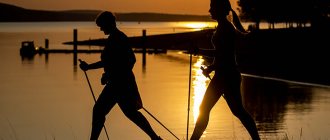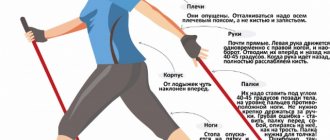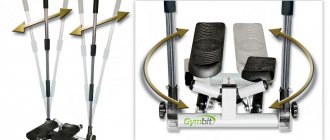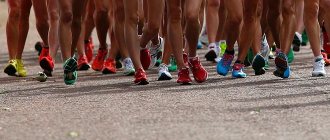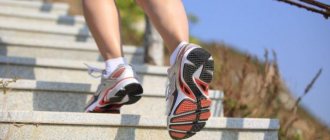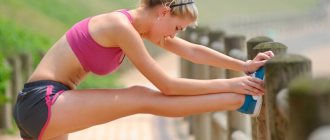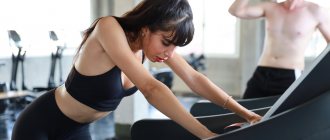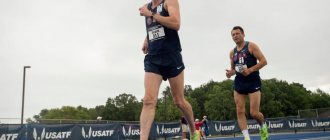Share:
A beautiful handstand and, even more so, walking on hands is a sign of “aerobatics” among CrossFit athletes. This is one of the most difficult gymnastic elements practiced in CrossFit.
If handstands end in a fall for you, don't worry—even Brent Fikowski (@fikowski), who finished second at the 2022 Crossfit Games, had a hard time figuring out the ins and outs of this exercise.
I was never a gymnast, and when I came to Crossfit, I was hopeless at handstands,” he says. “Since then, after several years of practice and a lot of epic failures, I was able to win the regional stage, which included a handstand.
We have prepared for you 5 effective training complexes that will help you improve the skill of performing this trick, as well as strengthen and pump up your shoulders. Of course, this will require some strength, flexibility and hard work on your part. But it's worth it because these five workouts from Brent Fikowski and other Games champions will help you master one of the most important elements of Crossfit gymnastics .
No. 1. Complex for development of sustainability
The first complex consists of 3 rounds, each of which includes the following exercises:
- 25 m walking lunges with a plate (or kettlebell) overhead;
- 6 squats with a barbell overhead (hold the barbell with a narrow grip).
Walking lunges with a plate or kettlebell overhead and overhead squats with a close grip help develop the overall stability you need, Fikowski said. But this may not be enough, the athlete warns:
If you lack flexibility in your shoulders, you'll have to shift your body weight to compensate—so stretch your chest, lats, and triceps.
“Once you have strength and flexibility, stand upside down! says Brent. -Keep your back against the wall, then do the same, only turning around to face the wall. Also try to walk, not only forward, but also backward, and even sideways. Place a couple of mats near you - they will save you during falls.”
Nordic walking: how it is useful and to whom it is indicated.
Nordic walking: how it is useful and to whom it is indicated.
Today, a type of physical activity such as Scandinavian (or Nordic) walking, which is based on a certain movement technique using poles reminiscent of ski poles, is gaining increasing popularity.
How is such walking useful? Who is it shown to?
Let's learn a little about Nordic walking: According to one version, this type of physical activity was first described by a native of Finland, Marco Kantaneva. Walking and running with poles were used by skiers as training exercises outside the winter season. In addition to helping athletes prepare for competition, Nordic walking has been proven to have health benefits for people of all fitness levels. Walking with Nordic poles is a great way to strengthen your cardiovascular system, tone your muscles, and get a boost of vigor and energy.
Let's look at some of the features of this activity: You move with additional weight. The poles weigh little, but after 30–60 minutes even this small weight will seem much heavier than at the beginning of the walk. This means that the load on the muscles is greater than during normal walking. Every step you take, you swing your arm. This means that, in addition to the legs, the shoulder girdle will work. For people with osteochondrosis and simply a sedentary lifestyle, this is a big plus: blood circulation throughout the body improves, muscles not involved in normal life are trained. For breathing, raising your arms at each step will be very useful - the chest expands, and as you lower your arms, it narrows. Thanks to this, the lungs are better ventilated. A plus to this will be an increase in lung volume due to increased load. As a result, increased endurance and better saturation of tissues with oxygen. Don't be alarmed by the word "Increased load" in the previous paragraph. You can calmly control the speed and activity of movements. Relying on poles significantly increases your stability on the road. Uphill climbs are easier. For people who have begun to develop diseases of the musculoskeletal system, Nordic walking (it is also called that) will be much easier than usual. This is due to the fact that the body weight is redistributed due to support on sticks. And one more advantage associated with poles - when you get up to rest, you can lean on the poles and throw a significant part of your weight onto them. This significantly reduces the load on your back, which you will immediately feel. There are no contraindications for Nordic walking.
Nordic walking is considered one of the safest sports. The Nordic walking technique is simple and does not require any special skills or abilities. This type of activity is very effective in terms of weight loss. People who are losing weight are often advised to run. But active running can be hampered by excess weight, unpreparedness of the cardiovascular system, and problems with the joints and spine. But everyone can walk. Here Scandinavian or Swedish walking with poles helps a lot. In terms of calorie consumption, this activity will be almost equivalent to jogging. In addition, you can walk many times longer than you can run. Answering the question of what Nordic walking is, it is worth saying that it is not some special Nordic, Swedish or Finnish walking. All people move the same way - on two legs. It's just that here you use the support of the stick with every step. In our country, walking with ski poles is more common, because people do not always have the opportunity to purchase special equipment for this purpose. And our winter is long, there is a lot of snow - ski poles are quite suitable for such conditions. True, if you knock them on the asphalt, it will be uncomfortable. There is a lot of talk today about the benefits of Nordic walking. Some go with ski poles, some take 2 canes, and some buy exclusively expensive equipment from leading brands.
So, what are the benefits of Nordic walking: Improved blood circulation. Shoulder girdle training Prevention of osteochondrosis: strengthening muscles, reducing the load on the spine. The possibility of long walking increases all its beneficial properties many times over, compared to running. But on the contrary, there are fewer negative factors.
Nordic walking for pensioners is one of the few sports that they can safely practice without risk to health. Doing Nordic walking is good for the respiratory system - it has been proven that the lungs are trained and ventilated. And this ensures the prevention of respiratory infections. A corollary from the previous point is blood oxygen saturation. O2 molecules will be delivered to every cell of the body. A 40-60 minute walk at an average pace is enough. The rehabilitation benefits have been proven (and this is fully applied today). Nordic walking is used as rehabilitation after fractures of the hip, knees, and lower legs. People walk with poles as additional support - which provides better stability and reduces the load on the healing bones.
And remember that your task is to regularly and happily take walks with poles at distances that are comfortable for you, and not to set world records, bringing your body to exhaustion!
Take care of yourself! Be healthy and always remember: movement is life!
No. 2. Complex “Progress”
The second workout we bring to you was developed by Austin Malleolo (@amalleolo) and Denise Thomas (@dentthomas7). Both work as trainers at Reebok CrossFit One and are members of the Crossfit HQ Seminar Staff.
Their advice: “Master one skill before moving on to the next. This will reduce the risk of injury and improve your skills gradually.
So, in the second stage of working on improving your handstand, you need to complete the following tasks:
- 25 meters of bear tunneling;
- 20 shoulder touches;
- 30 – 60 seconds holding a handstand against a wall;
- 10 shoulder touches in handstand.
When performing these exercises, do not forget that the center of body mass should place maximum stress on the shoulders.
What is “shoulder touch” and how this exercise is performed, you can see in the video below.
What are the benefits of fresh air?
Ideally, you need to walk in the fresh air in the forest or in the mountains. The city air is poisoned by tobacco smoke, car exhaust and emissions from industrial enterprises. In the forest you inhale substances with a strong antibacterial effect and become healthier. What happens high in the mountains?
Due to the low pressure in the mountain air there is less oxygen, so the person who inhales it subconsciously uses the body's reserve forces. Blood circulation improves, the work of the lungs and chest is activated. There is a risk of developing hypoxia, so it is better not to experiment with this. After walking in the mountains, most of us experience a surge of physical and emotional strength.
Walking in the mountains is a powerful source of healing
No. 3. Complex “Evil Raven”
In the third training complex you will also need to complete three rounds consisting of exercises:
- holding the “boat” while lying on your back;
- touching the shoulders in a handstand facing the wall (see video above);
- holding the “crow” pose (yoga exercise).
You need to start with 30 seconds of each of the above movements, gradually increasing the time to a minute. This is what Sam Orme, owner of the Crossfit Virtuosity club in Brooklyn, advises.
You can be any distance from the wall when performing shoulder touches,” says Sam. – Focus on achieving full body extension – from your arms all the way down to your toes.
Preparation: Build Strength and Endurance
We should also talk about the psychological mood. If you have heard information that it is impossible to learn at an adult age, without physical training or for any other reasons, do not believe it.
There are 4 main factors to achieve results:
- patience;
- force;
- endurance;
- sense of balance.
They need to be trained and developed daily.
Special attention should be paid to the feeling of fear of falling, which haunts many who decide to learn how to stand. It is especially familiar to people who have not previously engaged in physical activity.
A phobia can be easily overcome by trying to deliberately lose your balance a few times. This will help you understand how to fall correctly so as not to hurt yourself.
No. 4. Inverted Tabata
The fourth training complex, aimed at developing the ability to stand on your hands, consists of two parts.
Part I
In the first part, using the Tabata principle (20 work, 10 rest), you need to perform 8 rounds of handstands facing the wall. At the same time, you need to get into and out of the position using wall walking.
Part II
In the second part, your task is to complete as many repetitions of the exercise described below as possible.
Place a 10kg barbell plate close to the wall and stand in a rack position with both hands on the plate. Then move your left hand to the floor first, and then your right. After this, return your left hand to the pancake, and then your right. Repeat this as many times as possible.
This workout comes from Bowie Whiteman (@beauvault), a Crossfit coach and former gymnast. Such exercises will help you develop strength and coordination so that you can move your arms without problems while standing upside down.
Recipes for healthy eating
Meatball and noodle soup recipe
- 4.1 g Protein
- 3.5 g Fat
- 7.0 g Carbohydrates
- 70.4 kcal
25-30 min.
- #ham
- #dietary
- #zucchini
- #carrot
- #low calorie
- #dinner
- #first course
- #vegetable oil
- #onion
- #soup
- #cheese
- #ground meat
Other recipes
Professionals will teach you how to walk on your hands!
It is worth understanding that professional insurance and the help of a coach will help you improve much faster. You can learn to walk on your hands within the walls of Yourways gymnastics centers for adults and children. Choose to attend one of the schools that is closer to your home. You'll like it:
- new sports equipment;
- professionalism of trainers (we employ masters of sports and candidates for master of sports);
- discounts for club card holders;
- we have long-term experience working with adults and children of different ages (more than 8 years);
- It is possible to purchase an unlimited subscription;
- Every six months we hold competitions within the school, our students participate in city competitions.
It is difficult to achieve results at home. Start classes at a sports school today to get closer to your dream as quickly as possible!
Without support
Once you have mastered the wall exercises to develop balance, all that remains is to learn the basic technique. To do this, leaning upside down on the wall, take a small step forward with your hands. Make sure your shoulders are in line with your pelvis.
Lift one leg off the wall while maintaining balance. When you achieve stability, remove the other leg. Balance will help maintain proper load distribution. Most of the work should be done by the arm muscles.
How to do a handstand
Once you are comfortable doing a vertical wallstand, try free standing.
To learn how to take a pose, you need to first throw one leg up, and then the other, using swings:
- Get into a standing position.
- Extend one leg forward.
- Quickly step onto it, simultaneously tilting your body forward and lifting your other leg.
- Make sure it is parallel to your body.
- Forcefully swing the leg that is on the floor so that it stands next to the other.
- Don't overdo it to avoid a back flip.
- Look head forward, not down.
Now you can lower one leg, then the other and stand on the floor.
In order to understand how to properly stand on your hands, you need to ensure that your body is level, from head to heels. It should resemble a stretched string.
Correct positions
A straight stance is more difficult, a curved one is easier. To maintain balance at first, you can tuck or spread your legs.
Athletes recommend immediately training with straight legs. In the future, this will help you quickly master exercises such as walking or standing on one palm.
The correct position of the handstand determines whether it will benefit or, conversely, harm the body.
Pose "Candle"
If keeping your body in an extended position is difficult, try starting with an easier option.
The “candle” allows you to bend your knees and place them above head level. In this case, the center of gravity shifts, making it easier to learn to maintain balance.
It is safer to land on the floor from this pose. The exercise trains a sense of control over the body.
Pose "Candle"
Exit from the pose
In order not to harm yourself, you need to get back on your feet correctly after performing the exercise. There are several ways to do this.
Exit back - lower one leg to the floor in front of you, then the other.
Exiting the stance to the side is effective if you feel yourself starting to fall onto your back. Turn your body in the direction it led and try to lower one leg first, then the other.
Coming forward involves performing a somersault. Bow your head and press your chin to your neck. Lean back and lower your shoulders to the floor. Round your back and roll it across the floor. Ideally, you should get back to your feet after the somersault.
This trick is quite dangerous, so learn to do it on a gym mat.
Complication
Once you are confident in practicing free handstands, try to vary your workouts. Start with what you like best, gradually mastering other skills.
Walking
At first, it is better to train near a support or call an assistant. To learn to walk, do a handstand against a wall.
Then, leaning on the surface with your toes, raise your legs above your head and fix the pose. When you feel that you have control of your body, lift one leg off the wall, then the other.
Find your balance and move one palm forward slightly. Make sure that the body is one straight line.
Take a few steps and carefully stand on your feet. You should start the exercise with no more than 2-3 steps, gradually increasing their number.
Bars
Another option for how to do a handstand is an exercise on the uneven bars. Holding the machine with your palms will make it easier for you to maintain stability than if you lean on the floor.
Pirouette
This parallel bars exercise involves turning around its axis. To perform it you need a perfect sense of balance.
You need to move your palms one by one from one support to another to get a full turn. At the end of the exercise, stabilize the position and only then leave the pose.
Planche
The technique of performing the exercise is reminiscent of the “Plank” pose, with the difference that you should rely not on the floor, but on the bars.
The key to success in performing Planche is strong arm muscles. From the pose of standing upside down on supports, slowly lower your body so that the body remains motionless except for the shoulder joint. When finished you should be parallel to the ground.
The exercise will be completed successfully if you gradually shift the center of gravity forward.
When you learn how to do it, try lifting your body up from a horizontal pose.
The benefits of such a handstand will be doubled, since it involves all muscle groups in the body.
On 1 hand
A one-arm stand helps train the vestibular apparatus. It is quite difficult to perform - it requires a lot of endurance and patience.
Raising one arm up, the load on the other doubles, so it is important to do the exercise slowly and with maximum concentration.
Pushups
Another type of exercise that requires trained muscles of the shoulder joint. To maintain balance during this exercise, tilt your legs slightly forward, bend your knees and cross your calf muscles.
If handstand push-ups seem impossible for you, don’t give up on your desire. Practice shows that perseverance and regularity of practice certainly bears fruit.
Handstand push-ups
Errors
Beginners who don't know how to learn handstands will face a number of common mistakes.
Extend your arms over a long distance. This shifts the center of gravity and makes it difficult to maintain balance. Ideally, your palms should be shoulder-width apart.
Arms bent at the elbows. In this case, the main load falls on the elbow joint, which is likely to lead to injury. Your arms should be perfectly straight.
The body is tilted back and is behind the shoulders. You will never maintain your balance in this position. Try to keep your body straight. If you cannot control yourself, ask an assistant about it.
Bent spine. Another reason for your falls during your first workouts. Spread your shoulder blades and straighten your back.
By understanding how to avoid the most common mistakes, you will learn how to perform the exercise faster.
